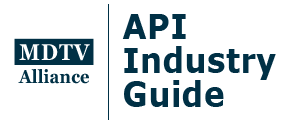The Active Pharmaceutical Ingredient Industry is the organ by which active pharmaceutical ingredients are manufactured from raw materials through both chemical and physical means. Depending on the complexity of the molecule required, synthesis of APIs might need multi-step complex chemistry utilizing a range of processing technologies.
Top API Manufacturers
The leading manufacturer of APIs today is TAPI (Teva Active Pharmaceutical Ingredients). Specializing in range of API-related fields, TAPI works in areas such as chemical synthesis, fermentation, chromatography and plant extraction and now has the industry’s largest portfolio of over 300 API products. In 2011 alone they achieved third-party sales of around $750 million.
Dr. Reddy’s is another leading manufacturer with 60 APIs for drug use, diagnostic kits and biotechnology products. Aurobindo and Cipla manufacture 200 APIs each, exporting their products to well over 200 countries worldwide. Other notable manufacturers are Sandoz-Lek-Biochemie, Ranbaxy, Matrix and Sun.
API Outsourcing
APIs are commonly referred to as ‘bulk pharmaceuticals’ and are in fact usually made in places at quite a distance to where tablets, suspensions and liquids are manufactured. Today, the greatest concentrations of API manufacturers are located around Asia, specifically in India and China. This has led to more and more companies to outsource API manufacturing to such places, which has the main benefit of eliminating the need to invest in highly expensive equipment and infrastructure – which on top of everything can also be complicated to install and maintain. A good example can be found with AstraZeneca, who manufacture 85% of its APIs but are currently in the process of withdrawing from all API production in favor of outsourcing.
Regulations
Regardless of where the active pharmaceutical ingredient is made, companies must adhere to strict safety and quality standards set by the country where it will be used. So those APIs manufactured in China or India for use in the United States must still be inspected and licensed by the FDA. Similarly, if the API is intended for use in Europe, they would need to meet regulations set by the European Medicines Agency. Regular inspection outside the country of use however can prove difficult with counterfeiting and contamination being high on the list of various agencies’ concerns. For instance, since 2008, the FDA has considerably increased its overseas staff as a way of attempting to eliminate these problems. As a result, countries such as India have gained their foothold in the global market and now have around 75 FDA-approved manufacturing facilities for API synthesis.
Going Green
Today there are more and more calls for API manufacturers to go green – that is to say, to reduce the waste they produce. Every year, large pharmaceutical manufacturers can produce anywhere from 3000 to 5000 tons of hazardous waste each. If one were to ask any reputable API manufacturer how they would like to improve the process, they’d likely say to make the reactions faster, or to make them cheaper. Ironically the first steps in reducing waste from API synthesis would be to reduce the number of reactions required to produce a given molecule. Therefore though the goal may be different, the means turn out to be the same as fewer reactions mean less solvent to dispose of. Another step in going green is to find different solvents and catalysts that are not only more efficient, but are also better for the environment.
To the Future
Major API manufacturers such as Merck, AstraZeneca and GlaxoSmithKline are also moving away from multifunctional plants and instead opting for specific activities at specific sites. In this way, there are serious concerns as to how any centralized control could function as after all an API manufactured by one company, in one country, with the excipient manufactured in another by a different company, then packaged and distributed by another company altogether makes the route rather difficult to monitor or control.
The current growth in new medical technologies is spurring the demand for APIs worldwide today especially with the increased importation of raw pharmaceutical ingredients from emerging markets. According to Boehringer Ingelheim, countries such as India and China, which now supply over 40% of APIs used in the U.S. will double that figure to a whopping 80% in just the next 10 years.
